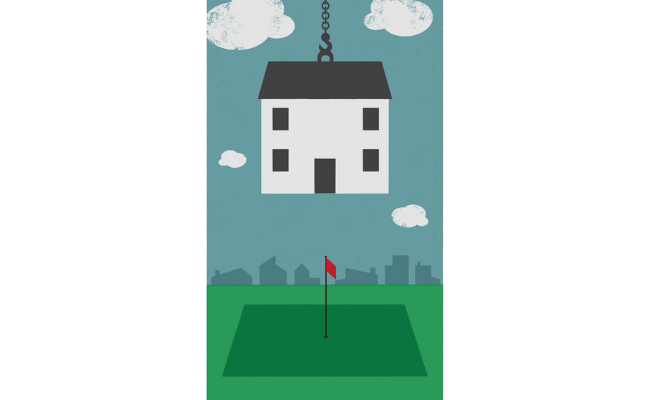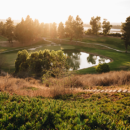The Strange Case of Glyphosate (Roundup)

OR HOW I LEARNED TO STOP WORRYING AND LOVE THE IRRATIONALITY THAT PERVADES THE MAKING OF LAWS
If you are not yet aware of the stampede to remove the world’s most popular and longest-running invasive species controller — Roundup — from our farms, parks, medians and golf courses, you soon will be.
Ads soliciting participation in class action lawsuits are running continuously on television, in newspapers, in magazines and over the internet. Billion-dollar judgments have been awarded by juries to those who used Glyphosate-based products and later contracted non-Hodgkin’s lymphoma.
Cities and counties have begun to ban their departments from using it on parks, medians, and municipally operated golf courses. A bill in this session of the California legislature that would have banned glyphosate-based products on the state’s schools died in committee, but only because it’s hard to ban something that the California Environmental Protection Agency just re-certified as 100 percent safe to apply as prescribed.
Roundup is the most popular version of the product; there are others. It is the world’s most popular herbicide. is integral to golf course maintenance. It has been used for more than 40 years seemingly without incident or consequence, which is much more than can be said for most of the herbicides that are not under withering attack.
Precisely because it has been used so widely without seeming consequence, and has been certified so often as completely safe to use as prescribed, and is so inexpensive to purchase and apply, there has never been any incentive to research and then develop an alternative weed controller. This has left us with no viable alternatives except to return to the products that predated glyphosate/Roundup, all of which are more problematic, more expensive and less effective.
But before you throw out that can of Roundup in your garage, consider the following: Virtually all of the studies that have been performed by federal, state and international agencies have determined there is no connection between glyphosate, the active ingredient in Roundup, and cancer in human beings. The United States EPA has made that finding. California’s Office of Environmental Health Hazard Assessment (OEHHA – CAL EPA) has recently posted a Rule under Title 27 Section 25705(b) of the state’s Code of Regulations to that same effect (1,100 micrograms of exposure equaling zero risk). And virtually every peer-reviewed scientific study has come to the same conclusion re: causality/connection, including the regulatory equivalents to the U.S. EPA in France, Germany, Australia, New Zealand, Korea, Brazil and Switzerland.
One — and only one — peer-reviewed study has come to anything amounting to a different conclusion; not a different conclusion about any causal link between glyphosate and cancer, but rather a separate finding about a correlative link. That study is one published by the International Agency for Research on Cancer (IARC), a unit of the World Health Organization (WHO) and, contrary to some of the unfounded attacks upon it by the Monsanto Corporation, it is a sound scientific study.
Yes, the IARC study designated glyphosate as “probably carcinogenic to humans.” However, according to IARC classifications, “probably carcinogenic to humans” means that the evidence that it causes cancer in humans is “limited” and that explanations including “chance, bias or confounding [meaning an unrelated factor] cannot not be ruled out.”
That is a “Category 2(a)” risk in IARC’s classifications, and while it is indicative of some evidence of tangential correlation, it falls well short of the evidence IARC requires to indicate anything close to the causal connection the American federal government, the State of California, and virtually all European Union agencies require to proscribe glyphosate’s use.
As for golf, while hysteria’s triumph over evidence will cause hardship in the short run, in the longer run the mother of invention known as necessity will surely bring us a credible alternative.
The World Health Organization (WHO) wrote of its subsidiary IARC finding the following: “IARC placed glyphosate in its hazard category “Group 2A: probably carcinogenic to humans” along with red meat, hot beverages, and working as a barber. The evidence on carcinogenicity was less robust than for agents such as bacon, salted fish, oral contraceptives and wine.”
The IARC 2(a) standard is indeed sufficient to trigger California’s Proposition 65 warning protocols. But labeling protocols and proscription protocols are vastly different. One measures hazard, and the other measures risk. The same California government that requires Proposition 65 warnings on products containing glyphosate has also categorically rejected glyphosate as a carcinogen, and when challenged to proscribe its use, has issued declarative findings regarding its safety.
Does this mean that we can expect to see the stampede recede and our world once again become a safe place in which to eat red meat and salted fish, drink hot beverages and wine, and allow our farmers, public works departments and municipal golf courses to control invasive species with the glyphosate-based products that have proven effective and safe for multiple generations? Don’t bet on it — the glyphosate part that is; the red meat, salted fish, hot beverages and wine are safe for now.
Axioms once planted spread faster than weeds. Big damage awards frighten insurance companies into withdrawing coverage. Lawyers winning those awards are not deterred. Environmental warriors bent on adding notches to their political belts are not dissuaded. Elected leaders follow crowds. Anti-empiricism rules our day.
As for golf, while hysteria’s triumph over evidence will cause hardship in the short run, in the longer run the mother of invention known as necessity will surely bring us a credible alternative. Let’s just hope it’s not too long in coming.











